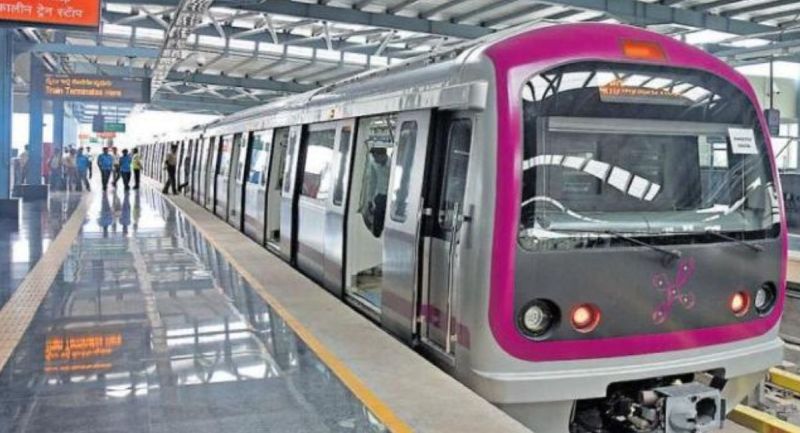India’s ambitious bullet train vision continues to gather momentum with the proposed Mumbai – Hyderabad High-Speed Rail (MHHSR) corridor. Spanning a length of 767 kilometers, this transformative project is designed to connect Mumbai, Pune, and Hyderabad, while enhancing regional connectivity across Maharashtra and Telangana.
📌 Project Background
The MHHSR is part of India’s second wave of high-speed rail initiatives. It was announced in 2019 as one of six new corridors aimed at bolstering rapid intercity transport. Tendering activities for the line began in October 2020, marking a critical early step toward eventual construction.
🚄 Project Specifications
The corridor is expected to offer a maximum train speed of 350 km/h and an operational speed of 320 km/h, reducing travel time drastically between two major southern metros. The proposed line will support high-frequency operations, transporting up to 750 passengers per train, with services running on standard gauge tracks (1435mm) and powered by 25 kV AC overhead catenary.
The project will also incorporate Digital Signaling (DS-ATC) systems and the Urgent Earthquake Detection and Alarm System (UrEDAS)—ensuring world-class safety and reliability.
🛤️ Route and Stations
The high-speed corridor will integrate 11 stations, combining major cities and growing urban centers. These are:
- Bandra Kurla Complex (Mumbai)
- Navi Mumbai (likely near Navi Mumbai International Airport)
- Lonavala
- Pune
- Kurkumb/Daund
- Akluj
- Pandharpur
- Solapur
- Kalaburagi (Gulbarga)
- Zaheerabad
- Hyderabad
A mix of elevated, underground, and at-grade sections will be constructed, with much of the corridor expected to follow existing expressways and highways to minimize land acquisition challenges.
💸 Expected Fare & Accessibility
While the fare structure is yet to be finalized, early indications suggest it will be approximately 1.5 times the existing First Class AC fare of Indian Railways. Final ticket pricing, class structures, and operational policies will be unveiled closer to the line’s commissioning.
🔧 Tendering and Construction Status
As of now, no physical construction has begun, but preliminary tendering activities are ongoing. These are being managed by the National High Speed Rail Corporation Limited (NHSRCL). Interested stakeholders and contractors can track tender updates and bid results directly via NHSRCL’s official portal.
🔍 Strategic Significance
This corridor represents a strategic investment in South India’s infrastructure, promising:
- Faster passenger connectivity
- Reduced pressure on air and road networks
- Stimulated economic growth in smaller towns along the corridor
- Technology transfer and skill development in high-speed rail systems
🏁 What’s Next?
While full-scale construction is pending government approvals and finalization of costs, MHHSR symbolizes India’s steadfast march toward a 21st-century rail network. With the success of the Mumbai–Ahmedabad HSR as a model, the Mumbai–Hyderabad corridor is poised to reshape intercity travel and unlock new development potential across the region.
FAQs – Mumbai–Hyderabad High-Speed Rail (MHHSR)
What is the Mumbai–Hyderabad High-Speed Rail (MHHSR) project?
The MHHSR is a proposed 767 km-long bullet train corridor connecting Mumbai, Pune, and Hyderabad. It aims to reduce travel time, improve connectivity, and support regional development through high-speed rail technology.
What cities and stations will the corridor connect?
The proposed corridor will include the following stations:
- Bandra Kurla Complex (Mumbai)
- Navi Mumbai (near the upcoming international airport)
- Lonavala
- Pune
- Kurkumb/Daund
- Akluj
- Pandharpur
- Solapur
- Kalaburagi (Gulbarga)
- Zaheerabad
- Hyderabad
What is the expected speed of the bullet train?
Maximum speed: 350 km/h
Operational speed: 320 km/h
Average speed: Approximately 250 km/h
How long will the journey between Mumbai and Hyderabad take?
While exact timings will be finalized later, the journey is expected to take under 4 hours, compared to over 12 hours by conventional train.
What kind of technology and safety features will be used?
The system will use:
- Standard gauge (1435 mm)
- DS-ATC (Digital Automatic Train Control) signaling
- 25 kV AC overhead electric traction
- UrEDAS (Urgent Earthquake Detection and Alarm System) for seismic safety
What is the current status of the MHHSR project?
As of now, the project is in the pre-construction phase. Tendering and feasibility assessments have begun, but no physical construction has started.
Who is executing the project?
The project is being overseen by the National High Speed Rail Corporation Limited (NHSRCL), the same body managing India’s other high-speed rail corridors.
What will the fare cost?
The exact fare is not finalized. However, it is expected to be about 1.5 times the First Class AC fare of current Indian Railways trains.
When will the MHHSR be operational?
There is no official completion timeline yet. Operations are expected to begin several years after construction begins, depending on land acquisition, approvals, and funding.
How will this project benefit India?
The MHHSR will:
- Significantly cut travel time
- Reduce congestion on highways and domestic flights
- Boost regional economies
- Encourage sustainable travel
- Generate jobs and promote technology transfer in rail engineering



